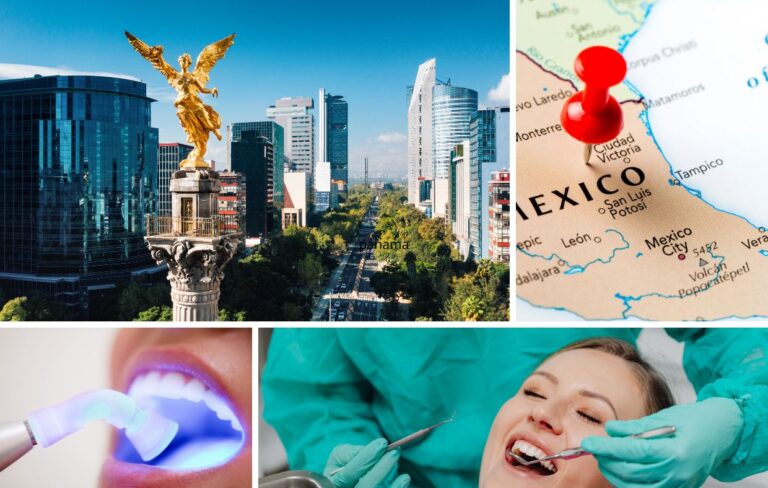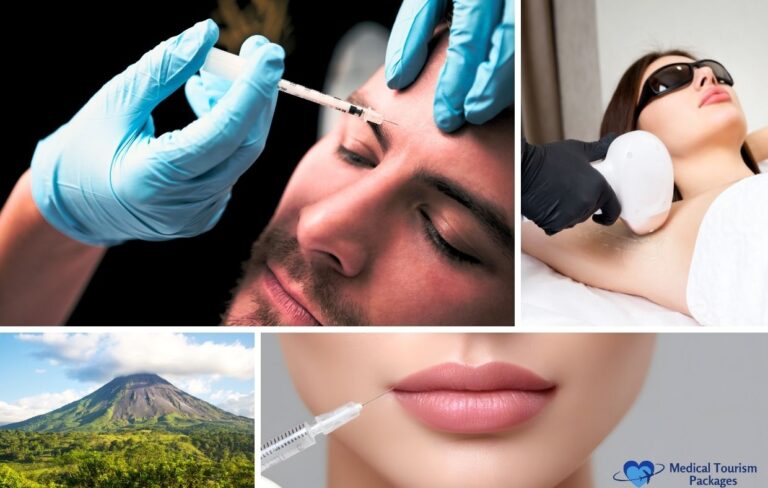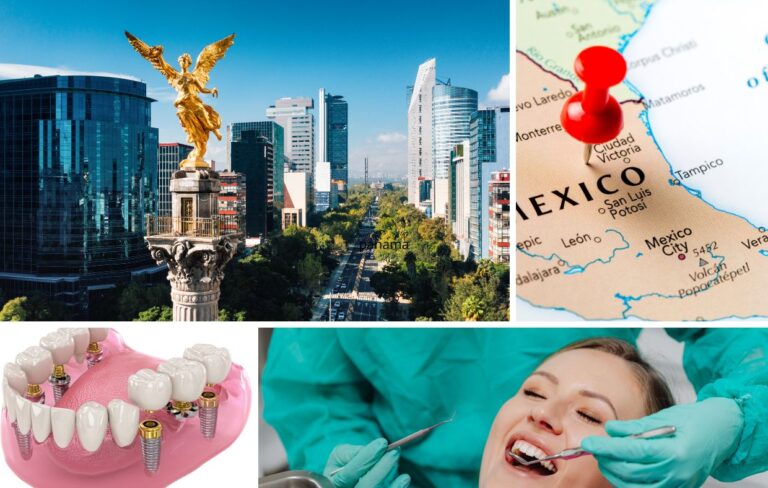Book Appointment Now
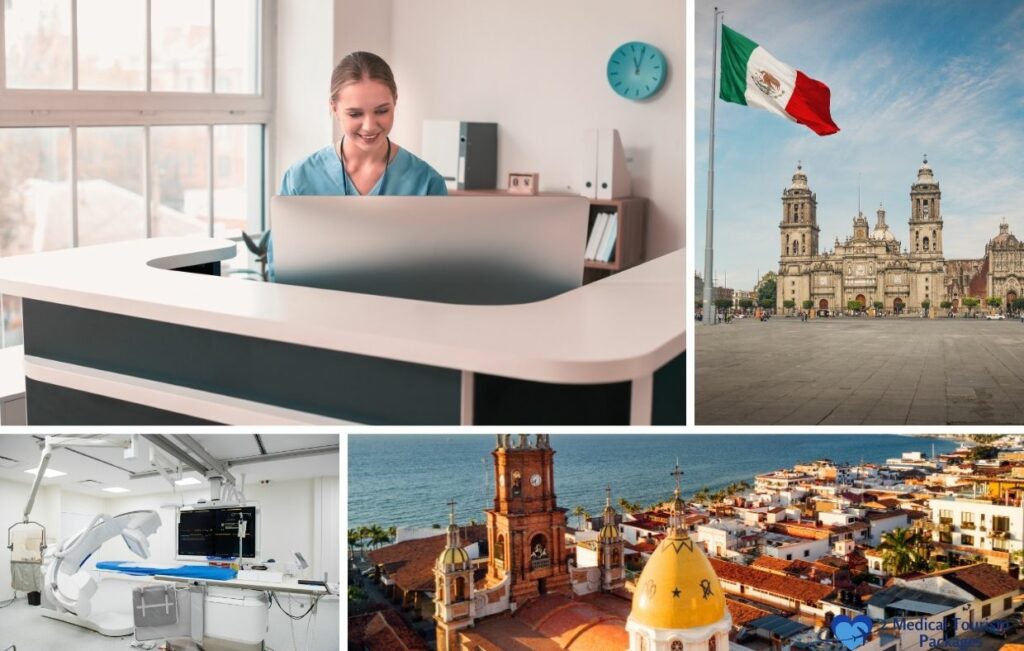
Medical Tourism in Mexico: A Guide for American Medical Tourists
With healthcare costs in the United States continuing to soar, an estimated 1.2 million Americans are crossing borders each year in search of affordable, quality medical care. Mexico has emerged as the leading destination for American medical tourists, offering world-class hospitals, internationally trained surgeons, and savings of 50-80% on major procedures. This comprehensive guide explains everything you need to know about medical tourism in Mexico—from costs and safety considerations to planning your medical journey south of the border.
Why Americans Are Choosing Mexico for Medical Tourism
The primary driver behind Mexico’s booming medical tourism industry is the stark cost differential between the two countries. Over 90% of U.S. residents who travel to Mexico for medical care cite “low cost” as their primary motivation. The savings are not marginal—they’re transformative.
Consider these real-world examples:
- Dental implants: $3,000 in the U.S. vs. $750-$900 in Mexico (75% savings)
- Gastric sleeve surgery: $15,000-$25,000 in the U.S. vs. $3,995-$7,000 in Mexico (up to 84% savings)
- Knee replacement: $25,000-$50,000 in the U.S. vs. $10,500-$11,500 in Mexico (up to 79% savings)
- Facelift: $12,125-$25,000 in the U.S. vs. $4,800-$7,000 in Mexico (up to 73% savings)
Mexico lowers costs by having cheaper operations, lower malpractice insurance, and good currency exchange rates. It keeps high care standards through internationally accredited facilities.
Accessibility and Proximity
Mexico’s geographical advantage cannot be overstated. Border cities like Tijuana and Los Algodones are just minutes away from major U.S. population centers. San Diego residents can drive to Tijuana in under 30 minutes, while Arizona residents can walk across the border to Los Algodones for dental care.
For procedures requiring longer recovery periods, major Mexican destinations like Cancun, Guadalajara, and Mexico City offer direct flights from over 20 U.S. cities, making travel convenient and affordable.
Reduced Wait Times and Personalized Care
While Americans often face lengthy wait times for elective procedures, Mexican clinics typically offer appointments within days or weeks. This accessibility is particularly attractive to Canadian patients, where the median wait time for orthopedic surgery can exceed 57 weeks.
Mexican medical facilities often give more personal attention. Many clinics have patient coordinators, bilingual staff, and care packages that include transportation and accommodation.
Popular Medical Procedures and Specializations in Mexico
Mexico has developed distinct centers of excellence for various medical specialties, each offering significant cost advantages and specialized expertise.

Affordable Dental Implants in Mexico
Dental tourism represents 63% of all U.S. medical visits to Mexico, making it the most popular category of medical tourism procedures. The dramatic cost savings stem from Mexico’s lower overhead costs combined with high-volume practices that specialize in treating international patients. Single dental implants, which typically cost $3,000-$6,000 in the United States, are available for $750-$1,800 in Mexico, representing savings of up to 75%.
For patients requiring full-mouth reconstruction, the savings become even more substantial. All-on-4 and All-on-6 implant systems, which can cost $12,000-$60,000 in the U.S., are available for $7,000-$19,000 in Mexico. These comprehensive treatments often include the surgical procedure, temporary and permanent prosthetics, and multiple follow-up visits, making them particularly attractive for patients facing extensive dental work.
Common dental procedures and savings:
- Dental implants: $750-$1,800 vs. $3,000-$6,000 in the U.S.
- All-on-4/All-on-6 systems: $7,000-$19,000 vs. $12,000-$60,000 in the U.S.
- Porcelain veneers: $250-$550 per tooth vs. $900-$2,500 in the U.S.
- Dental crowns: $500-$650 vs. $1,200-$2,000 in the U.S.
Mexican dental clinics have invested a lot in new technology. Many clinics have CAD/CAM milling machines that make crowns the same day. They also have 3D imaging systems and digital treatment planning software. These match or are better than those in American dental practices.
Cosmetic and Plastic Surgery
Mexico has established itself as a premier destination for aesthetic procedures, attracting patients who can achieve savings of 60% or more without compromising quality of care. The country’s plastic surgery industry has matured significantly over the past decade, with many surgeons trained at prestigious institutions in Mexico, the United States, and Europe. Breast augmentation procedures, which average $6,500-$7,800 in the U.S., are available for $3,600-$5,000 in Mexico.
The popularity of combination procedures has led to the development of comprehensive “Mommy Makeover” packages that typically include breast enhancement, tummy tuck, and liposuction for $7,000-$8,950, compared to $15,000-$20,000 or more in the United States. Many Mexican plastic surgery centers serve international patients. They offer all-inclusive packages. These packages include the surgery, luxury accommodation, recovery care, and ground transportation.
Popular cosmetic procedures and costs:
- Breast augmentation: $3,600-$5,000 vs. $6,500-$7,800 in the U.S.
- Tummy tuck: $3,000-$6,000 vs. $8,150-$8,800 in the U.S.
- Liposuction: $1,150-$3,500 vs. $3,200-$6,025 in the U.S.
- Mommy makeover packages: $7,000-$8,950 vs. $15,000-$20,000+ in the U.S.
The most reputable facilities maintain memberships in international plastic surgery associations and employ board-certified surgeons who specialize in aesthetic procedures for foreign patients.
Cost-Effective Bariatric Surgery Options
Mexico has positioned itself as a world leader in affordable weight-loss surgery, attracting thousands of patients annually who face prohibitive costs or insurance restrictions in the United States. The dramatic cost difference makes these life-changing procedures accessible to patients who might otherwise be unable to afford them. Gastric sleeve surgery, the most popular bariatric procedure, costs $3,995-$7,000 in Mexico compared to $10,000-$25,000 in the U.S., representing savings of up to 84%.
Mexican bariatric centers have developed highly specialized programs that focus exclusively on weight-loss surgery, allowing surgeons to perform high volumes of procedures and develop exceptional expertise. Many of these centers are located in Tijuana, where the proximity to the U.S. border makes follow-up care more accessible. The most reputable facilities offer comprehensive programs that extend beyond surgery to include nutritional counseling, psychological support, and long-term patient communities.
Bariatric surgery costs and savings:
- Gastric sleeve: $3,995-$7,000 vs. $10,000-$25,000 in the U.S.
- Gastric bypass: $5,295-$8,500 vs. $15,500-$35,000 in the U.S.
- Mini gastric bypass: $5,495 vs. $20,000-$30,000 in the U.S.
- Duodenal switch: $5,995-$10,000 vs. $20,000-$30,000 in the U.S.
Success rates at top Mexican bariatric centers are comparable to those in the United States, with patients typically losing 60-70% of excess weight within the first year when proper protocols are followed.
Savings on Joint Replacement Surgeries
Joint replacements and orthopedic surgeries offer substantial savings:
- Knee replacement: $10,500-$11,500 vs. $25,000-$50,000 in the U.S.
- Hip replacement: $12,500 vs. $28,000-$40,000 in the U.S.
- Shoulder replacement: $9,500 vs. $24,500 in the U.S.
Affordable Vision Correction Procedures
Vision correction procedures are significantly more affordable:
- LASIK (both eyes): $1,500-$2,000 vs. ~$4,000 in the U.S.
- Cataract surgery: ~$2,000 per eye vs. $3,500+ in the U.S.
Advanced Regenerative Medicine Treatments in Mexico
Mexico is gaining recognition for cutting-edge therapies in regenerative medicine and stem cell treatments. Due to a more flexible regulatory environment under COFEPRIS (Mexico’s health regulatory body), some therapies that are still in clinical trials in the U.S. may be available to patients in Mexico, attracting those seeking advanced treatment options.
Top Destinations for Medical Tourism in Mexico
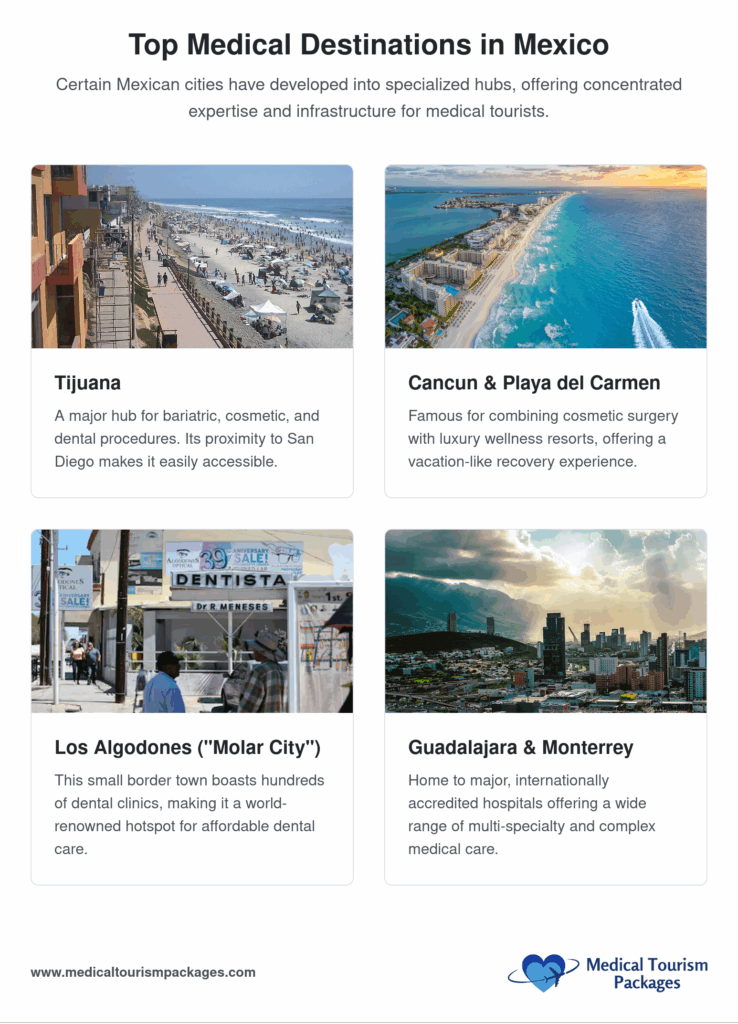
Tijuana: The Border Surgery Capital
Located just 30 minutes from San Diego, Tijuana has emerged as Mexico’s busiest medical tourism hub, particularly renowned for bariatric surgery, cosmetic procedures, and comprehensive dental care. The city’s extreme proximity to the United States provides unparalleled convenience for American patients, who can drive across the border and return home the same day for minor procedures. For more complex surgeries requiring extended recovery, Tijuana offers a well-developed infrastructure of recovery houses, patient-friendly hotels, and specialized aftercare facilities.
The volume of medical tourists has led to intense competition among providers, driving down costs while maintaining quality standards among reputable clinics. The Mexican government has even established a medical fast-pass lane at the San Ysidro border crossing, allowing medical tourists to return to the U.S. in 15-30 minutes rather than waiting hours in regular traffic.
Key advantages:
- 30-minute drive from San Diego
- Medical fast-pass lane at border (15-30 minute return vs. hours)
- High volume creates competitive pricing
- Established recovery houses and patient support infrastructure
However, the high concentration of medical providers means quality varies significantly, making thorough research and credential verification essential. Some areas of Tijuana have U.S. State Department travel advisories, though the main medical zones are generally considered safe when patients use clinic-provided transportation and follow recommended safety protocols.
Los Algodones: “Molar City”
This remarkable small border town near Yuma, Arizona, has earned the nickname “Molar City” for its extraordinary concentration of dental care providers. Within just a few city blocks, Los Algodones hosts over 300 dental clinics and approximately 600 dentists, creating the highest concentration of dental professionals in the world. The town’s economy revolves entirely around dental tourism, with the vast majority of businesses catering to American and Canadian patients seeking affordable dental care.
The typical patient profile includes retirees and “Winter Texans” who make regular trips for routine cleanings, complex restorative work, and full-mouth reconstructions. The convenience factor is unmatched—many patients park on the U.S. side and simply walk across the border to their dental appointments. Prices are consistently 70% lower than U.S. rates, with procedures like dental cleanings costing $35 compared to $140 in the United States.
What makes Los Algodones unique:
- Over 300 dental clinics within a few blocks
- ~600 dentists serving international patients
- Prices typically 70% lower than U.S. rates
- Walking distance from U.S. border
The high volume and specialization have created a unique ecosystem where many dentists have decades of experience treating international patients and have invested in state-of-the-art equipment and English-speaking support staff. While the overwhelming number of options can make selection challenging, the town’s reputation has been built on delivering quality dental care at unprecedented value.
Cancun and Playa del Carmen: Luxury Medical Tourism
The Cancun region combines medical excellence with world-class tourism infrastructure:
- Cosmetic surgery in luxury settings
- Dental care with resort-style recovery
- Some U.S. surgeon programs (American doctors operating in Mexican facilities)
Key advantages:
- JCI-accredited hospitals like Hospital Galenia
- Direct flights from 20+ U.S. cities
- High-end recovery resorts and spas
- English-speaking staff standard at international clinics
Guadalajara and Monterrey: Advanced Medical Centers
These major industrial cities offer sophisticated medical facilities for complex procedures:
- Cardiology and cardiac surgery
- Orthopedic surgery
- Oncology and cancer treatment
- Organ transplants
Notable features:
- Several JCI-accredited hospitals
- University-affiliated medical centers
- Often serve both local and international patients
- Less touristy but more focused on complex medical care
Comprehensive Cost Comparison: Mexico vs. U.S.
| Procedure Category | Specific Procedure | U.S. Average Cost | Mexico Average Cost | Savings |
|---|---|---|---|---|
| Dental | Single Implant + Crown | $3,000-$6,000 | $900-$1,800 | 60-75% |
| All-on-4 System | $12,000-$60,000 | $7,000-$19,000 | 42-68% | |
| Porcelain Veneer | $900-$2,500 | $250-$550 | 61-80% | |
| Dental Crown | $1,200-$2,000 | $500-$650 | 58-68% | |
| Bariatric | Gastric Sleeve | $10,000-$25,000 | $3,995-$7,000 | 60-84% |
| Gastric Bypass | $15,500-$35,000 | $5,295-$8,500 | 65-85% | |
| Mini Gastric Bypass | $20,000-$30,000 | $5,495 | 73-82% | |
| Cosmetic | Facelift | $12,125-$25,000+ | $4,800-$7,000 | 60-73% |
| Breast Augmentation | $6,500-$7,800 | $3,600-$5,000 | 36-55% | |
| Tummy Tuck | $8,150-$8,800 | $3,000-$6,000 | 32-63% | |
| Liposuction | $3,200-$6,025 | $1,150-$3,500 | 42-82% | |
| Orthopedic | Knee Replacement | $25,000-$50,000 | $10,500-$11,500 | 58-79% |
| Hip Replacement | $28,000-$40,000 | $12,500 | 55-69% | |
| Cardiac | Heart Bypass | $44,000-$144,000 | $21,000-$27,000 | 50-85% |
| Heart Valve Replacement | $46,000-$170,000 | $16,000-$31,000 | 65-82% |
All-Inclusive Package Benefits
Many Mexican clinics offer comprehensive packages that include:
- Surgeon’s fees and hospital costs
- Pre-operative testing
- Post-operative medications
- Hotel accommodation (often for companion too)
- Airport and clinic transportation
- Follow-up consultations
These packages simplify logistics and often provide additional value, making the total cost comparison even more favorable when factoring in the convenience and stress reduction.
Medical Tourism Safety, Accreditation, and Quality Standards in Mexico
Regulatory Framework and Accreditation Bodies
Mexico maintains a robust healthcare regulatory system overseen by COFEPRIS (Comisión Federal para la Protección contra Riesgos Sanitarios), the Mexican equivalent of the FDA. However, the most reliable indicators of quality are international accreditations:
Joint Commission International (JCI)
- The gold standard for international hospital accreditation
- Uses the same standards that accredit U.S. hospitals
- Mexico has approximately 9-10 JCI-accredited hospitals
- Notable examples: Centro Médico ABC (Mexico City), Hospital Galenia (Cancun)
American Association for Accreditation of Ambulatory Surgery Facilities (AAAASF)
- Certifies outpatient surgical facilities
- Particularly important for cosmetic surgery procedures
- Ensures U.S.-equivalent safety standards for office-based surgery
How to Vet a Medical Provider
Essential steps for verifying credentials:
- Verify Medical License (Cédula Profesional)
- Check Mexico’s National Registry of Professionals online
- Confirms the doctor is legally authorized to practice
- Confirm Specialty Certification (CONACEM)
- Verify board certification in the specific specialty
- Optional but crucial for specialists (plastic surgeons, bariatric surgeons, etc.)
- Check Facility Accreditation
- Look for JCI accreditation for hospitals
- AAAASF certification for surgical centers
- COFEPRIS registration (minimum requirement)
Understanding the Risks
While Mexico offers excellent medical care, patients should be aware of potential risks:
Medical Complications
- Infection risk: CDC has issued warnings about antibiotic-resistant infections from some Tijuana plastic surgery clinics
- Fungal meningitis outbreaks: Documented cases linked to contaminated anesthesia in certain facilities
- Substandard materials: Some lower-cost providers may use inferior implants or equipment
Limited Legal Recourse
- Malpractice lawsuits in Mexico are complex and time-consuming
- Different legal system with potentially lower liability caps
- Patients effectively waive U.S. legal protections
Post-Operative Care Challenges
- Complications may arise after returning home
- U.S. doctors sometimes hesitant to treat complications from foreign surgery
- Distance makes follow-up care more difficult
Essential Insurance Protection
Standard travel insurance excludes medical tourism procedures. Patients must secure specialized Medical Tourism Insurance (MTI):
- Coverage includes: Complication treatment, extended recovery stays, emergency evacuation
- Cost: $200-$500 for coverage up to $25,000+
- Providers: Companies like Global Protective Solutions offer specialized MTI policies
- Recommendation: Non-negotiable protection against potentially catastrophic costs
Planning Your Medical Journey to Mexico: Step-by-Step Guide
Step 1: Research and Choose a Procedure/Clinic
The foundation of a successful medical tourism experience begins with thorough research conducted 3-6 months before your planned travel date. This initial phase requires a systematic approach to identifying potential procedures, clinics, and surgeons while building a comprehensive understanding of your options. Start by clearly defining your medical needs and desired outcomes, then research potential providers through multiple independent sources including patient review platforms, medical tourism forums, and clinic websites.
Create a shortlist of 3-5 potential providers, but resist the temptation to make decisions based solely on cost or marketing materials. The verification process represents your primary protection against substandard providers and is absolutely non-negotiable for ensuring your safety.
Essential credential verification steps:
- Verify each doctor’s Cédula Profesional through Mexico’s National Registry
- Confirm specialty board certification through CONACEM website
- Check facility accreditation (JCI, AAAASF, or minimum COFEPRIS registration)
- Review current U.S. State Department travel advisories for your destination
Official databases let patients check providers on their own. Patients can find out which providers are real and qualified. They can also spot those without proper credentials. This verification step is what transforms medical tourism from a risky gamble into an informed healthcare decision.
Step 2: Virtual Consultation and Provider Selection
Once you’ve verified credentials and narrowed your options, most reputable Mexican clinics offer comprehensive virtual consultations, often at no charge. These consultations represent a crucial opportunity to assess not only the medical aspects of your care but also the communication style and professionalism of your potential surgical team. Prepare thoroughly by compiling your complete medical history, current medications, previous surgical experiences, and specific questions about the procedure, recovery process, and expected outcomes.
During the consultation, evaluate how well the surgeon listens to your concerns, explains the procedure in terms you understand, and addresses potential risks and complications honestly. This interaction will give you valuable insight into whether you feel comfortable entrusting your care to this particular provider.
Key consultation objectives:
- Assess surgeon’s communication style and bedside manner
- Receive detailed, itemized treatment quotes with no hidden fees
- Understand the complete timeline from arrival to discharge
- Clarify post-operative care requirements and follow-up protocols
The medical record transfer process should begin during this phase, with you providing all relevant documentation including recent lab work, imaging studies, and clearance letters from your primary care physician. Reputable providers will review these materials carefully and may request additional testing to ensure you’re an appropriate candidate for the procedure.
Step 3: Travel and Accommodation Planning
Proper travel planning extends far beyond booking flights and hotels—it requires careful coordination of documentation, insurance, and specialized accommodations that support medical recovery. U.S. citizens need only a valid passport for stays under 180 days, but your passport should have at least six months of remaining validity to avoid any travel complications. Travel health insurance and Medical Tourism Insurance represent critical protections that standard policies don’t provide, covering complications that may arise from your procedure.
Travel documents are essential.
- Valid passport with 6+ months remaining validity
- Copies of all medical records and current prescriptions
- Travel health insurance and MTI policy documentation
- Printed itinerary and medical appointment confirmations
Your choice of accommodation affects how well you recover. Many clinics offer partnerships with patient-friendly hotels that provide modified room setups, on-call nursing services, and meal delivery options suitable for post-surgical dietary requirements. For more complex procedures, specialized recovery houses represent the gold standard of post-operative care, offering 24/7 nursing supervision, medical-grade equipment, and peer support from other recovering patients.
All-inclusive packages often include accommodation for the patient and a companion. They know that support during recovery helps both medically and emotionally. The presence of a trusted companion can significantly improve both the safety and comfort of your medical journey.
Step 4: Pre-Operative Procedures
Arrival and Preparation:
- Airport pickup by clinic representatives
- Pre-operative testing and final consultations
- Meet anesthesiologist and surgical team
- Review and sign consent forms in your preferred language
Step 5: Recovery and Aftercare
Immediate Post-Operative Care:
- Hospital stay duration varies by procedure
- Follow all post-operative instructions meticulously
- Attend scheduled follow-up appointments
- Use recovery house services for complex procedures
Recovery Timeline Examples:
- Dental implants: 2-3 days initial stay, return in 3-6 months for permanent crowns
- Cosmetic surgery: 7-14 days before air travel clearance
- Bariatric surgery: 5-7 days including monitoring period
- Orthopedic surgery: 7-10 days or until cleared by surgeon/physical therapist
Step 6: Returning Home and Continued Care
Before Departure:
- Obtain all medical records and operative reports
- Receive written post-operative care instructions
- Get prescription medications with proper documentation
- Confirm follow-up care arrangements at home
U.S. Follow-Up Care:
- Arrange follow-up with a local physician before traveling
- Many surgeons offer telemedicine consultations
- Keep all Mexican medical records for future reference
Travel Logistics and Patient Experience
Border Crossings and Transportation
For patients traveling to border cities like Tijuana, the Mexican government has implemented innovative solutions to facilitate medical tourism. The most notable is Tijuana’s Medical Fast-Pass Lane at the San Ysidro border crossing, which dramatically reduces return wait times from 2-3 hours to just 15-30 minutes. This dedicated lane operates seven days a week and requires a pass from participating medical facilities, demonstrating the official recognition and support for medical tourism.
Patients simply present their medical documentation and fast-pass to border agents, allowing them to return to the United States quickly and efficiently. This streamlined process has made border medical tourism much more practical and appealing for patients who need to return home relatively quickly after their procedures.
Major flight connectivity options:
- Cancun: Direct flights from over 20 U.S. cities including Los Angeles, Miami, New York, Dallas, and Chicago
- Mexico City and Guadalajara: Frequent connections via major U.S. carriers
- Tijuana: Limited direct flights, but San Diego airport is only 20 minutes away
- Puerto Vallarta and Monterrey: Direct flights from Texas and California
The flight connectivity to major Mexican medical destinations has improved significantly in recent years, with airlines recognizing the growing medical tourism market and adding direct routes from major U.S. metropolitan areas. This improved accessibility has made it easier for patients to reach quality care without the complexity of connecting flights or extended travel times.
Language and Cultural Considerations
One of the most pleasant surprises for American medical tourists in Mexico is discovering that language barriers are rarely problematic at established medical facilities. Most clinics serving international patients have invested heavily in bilingual staff, with English-speaking patient coordinators, nurses, and administrative personnel being the standard rather than the exception. Many surgeons and specialists have completed training in the United States or other English-speaking countries, making them comfortable communicating complex medical information in English.
Some facilities even employ U.S. expatriate liaisons who understand both the American healthcare system and patient expectations, helping bridge any cultural or communication gaps. These liaisons can be invaluable in explaining differences in medical protocols or helping patients navigate the local healthcare environment.
Communication has many advantages.
- Most international clinics have bilingual staff
- English-speaking patient coordinators are standard
- Some facilities employ U.S. expat liaisons
- Basic Spanish phrases helpful for local interactions
The cultural advantages of receiving care in Mexico extend beyond language capabilities. Mexican healthcare culture tends to be more personal and family-oriented than the often rushed environment of U.S. medical facilities. Patients frequently comment on the warmth and attentiveness of nursing staff, who check on patients more frequently and provide more hands-on care than is typical in American hospitals.
The family-centric culture means that clinics are welcoming to companions and family members, with many packages automatically including accommodation and meals for support persons. This cultural approach recognizes that having emotional support during medical procedures contributes to better outcomes and patient satisfaction. While basic Spanish phrases can be helpful for interactions outside medical facilities, they’re generally unnecessary for medical care itself at reputable international clinics.
Specialized Recovery Houses for Patient Care
Specialized Recovery Houses:
- 24/7 nursing supervision
- Private rooms with medical-grade beds
- Nutritious meal plans for specific procedures
- Transportation to follow-up appointments
- Peer support from other recovering patients
Hotel Partnerships:
- Patient-friendly hotels with on-call nursing
- Modified room setups for post-surgical needs
- Meal delivery services
- Proximity to medical facilities
Real Patient Testimonials and Case Studies
Success Story: Knee Replacement in Cancun
Donna F. from Mississippi underwent a knee replacement at JCI-accredited Hospital Galenia in Cancun. Her husband’s employer not only covered the procedure but paid her a $5,000 incentive to choose the Mexican option. “It was a great experience,” she reported. Her U.S. surgeon flew to Cancun to perform the surgery, combining American expertise with Mexican cost efficiency. The company reported “overwhelming positive reactions” from dozens of employees who participated in similar programs.
Success Story: Dental Tourism in Border Towns
Ed and Vickie E. from Michigan regularly travel to Nuevo Progreso for dental care. “We’ve found this is the safest community to cross into. You meet lots of good people,” they told Axios. Like many “Winter Texans,” they’ve discovered substantial savings on routine and complex dental work while enjoying local culture and cuisine.
Cautionary Tale: Importance of Provider Vetting
In a widely reported 2018 case, a Dallas woman suffered brain damage due to anesthesia mishandling during low-cost plastic surgery in Mexico. More recently, Lauren Robinson, 29, of Texas died from fungal meningitis linked to contaminated anesthesia following cosmetic surgery in Matamoros. These tragic incidents underscore the critical importance of choosing accredited facilities and properly credentialed surgeons.
Security Incident: The Matamoros Kidnapping
In March 2023, four Americans traveling to Matamoros for cosmetic surgery were kidnapped by a cartel in a case of mistaken identity, resulting in two deaths. While medical tourism remains generally safe in established medical zones, this incident highlighted the importance of following travel advisories and using clinic-provided transportation.
Frequently Asked Questions About Medical Tourism in Mexico
Is medical tourism safe in Mexico?
Yes, medical tourism in Mexico can be safe when you choose reputable providers. The country has many internationally accredited hospitals and highly trained doctors. Safety depends on doing thorough research: look for JCI-accredited hospitals or well-reviewed facilities with proper certification, and avoid extremely cheap, unverified providers.
What are the cheapest procedures in Mexico?
Dental work and cosmetic surgeries offer the biggest savings. Dental implants, crowns, and dentures can be up to 70% cheaper than in the U.S. Bariatric and cosmetic surgeries often cost 50–80% less. Even basic procedures, like dental cleanings, are far more affordable—about $35 compared to $140 in the U.S.
Which Mexican city is best for dental implants?
Los Algodones, also known as “Molar City,” is one of the top destinations for dental implants. It has over 300 dental clinics with prices around 75% lower than in the U.S., and many dentists are U.S.-trained. Tijuana and Cancun are also excellent choices, offering modern facilities and the option to combine treatment with leisure travel.
Do U.S. insurance plans cover Mexican medical care?
Most U.S. insurance plans do not cover elective procedures in Mexico. Patients usually pay out-of-pocket, though some insurers may reimburse part of the costs if proper documentation is submitted. A few self-insured employer plans cover planned care abroad. Always check with your insurance provider in advance and consider medical tourism insurance as backup.
What documents are required to travel to Mexico for medical care?
The main requirement is a valid passport. U.S. citizens can stay in Mexico for up to 180 days without a visa. Bring copies of medical records, prescriptions, and test results related to your treatment. If driving, you’ll need a valid driver’s license in the U.S., but a passport is required to re-enter. It’s also helpful to carry proof of your medical appointment and travel itinerary.
How do I know if a Mexican hospital or clinic is safe?
To ensure a hospital or clinic is safe, check for international accreditation such as Joint Commission International (JCI) for hospitals or AAAASF for surgical centers. Confirm that it’s licensed by COFEPRIS (Mexico’s health authority) and that doctors are board-certified through CONACEM. Reputable facilities are transparent about credentials, while questionable ones often avoid sharing details or lure patients with suspiciously low prices.
Working with a Medical Tourism Facilitator
Given the complexity of planning medical care abroad, many patients benefit from working with experienced medical tourism facilitators. These specialized companies can help navigate the challenges and risks while ensuring access to quality care.
Key Services Provided by Reputable Facilitators
- Provider vetting and verification of credentials and accreditations
- Comprehensive package coordination including procedure, accommodation, and transportation
- Patient support throughout the journey with bilingual coordinators
- Insurance guidance including Medical Tourism Insurance recommendations
- Recovery planning including specialized aftercare facilities
- Follow-up care coordination with healthcare providers back home
What to Look for in a Medical Tourism Facilitator
- Transparent provider networks with verifiable credentials
- Comprehensive insurance options and risk management
- 24/7 patient support throughout the medical journey
- Established relationships with internationally accredited facilities
- Clear, all-inclusive pricing with no hidden fees
- Positive patient testimonials and verified references
Conclusion: Making an Informed Decision About Medical Tourism in Mexico
Medical tourism in Mexico offers a compelling solution to the escalating costs of healthcare in the United States. Mexico offers savings of 50-80% on major procedures. It has internationally accredited facilities and highly trained medical professionals. This makes Mexico the top choice for American medical tourists.
However, success in medical tourism requires meticulous planning, thorough research, and a clear understanding of both the benefits and risks involved. The dramatic cost savings are real, but so are the potential complications and challenges of receiving care abroad.
The key to a successful medical tourism experience lies in:
- Prioritizing credentials over cost when selecting providers
- Investing in specialized Medical Tourism Insurance for financial protection
- Thoroughly vetting all providers using official verification systems
- Planning comprehensive aftercare before leaving the United States
- Following official travel and health advisories for safety
For patients who approach medical tourism with the seriousness and preparation it deserves, Mexico offers access to life-changing procedures that might otherwise be financially out of reach. Whether you’re seeking a full smile makeover in Los Algodones, weight-loss surgery in Tijuana, or cosmetic enhancement in Cancun, the combination of quality care and significant savings can make your medical goals achievable.
The decision to travel abroad for medical care is deeply personal and should be made in consultation with your healthcare providers. Given the complexity of coordinating international medical care, many patients find that working with an experienced medical tourism facilitator helps ensure their journey is safe, successful, and properly managed from start to finish.
If you’re considering medical tourism in Mexico, take time to thoroughly research your options, verify all provider credentials, and ensure you have proper insurance protection. When you’re ready to move forward, partnering with a reputable facilitator like Medical Tourism Packages can help navigate the complexities while connecting you with vetted, accredited providers who meet the highest standards of care.

